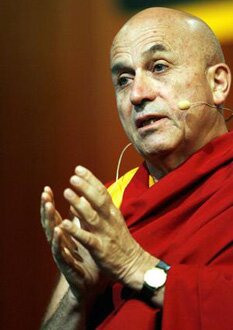 We all posses a widely unknown powerful energy called Kundalini which sits at the base of our spine.
We all posses a widely unknown powerful energy called Kundalini which sits at the base of our spine.
In the classic Hatha yoga and Tantra traditions, each person is believed to possess a great reservoir of dormant feminine energy. This raw creative energy lies tightly coiled at the base of the spine. It is often associated with the serpent. Kundalini energy is part of the life force, so there is always a minute amount flowing through your subtle body. Only when properly understood and awakened can it express its full potential, rising through you and energizing your senses. It is possible to awaken your Kundalini through different forms of meditation or yoga, though the process should be undertaken slowly. A hasty opening of the Kundalini center can cause headaches and other physical symptoms. Raised properly, Kundalini energy has the potential to spring forth as active kinetic energy that may result in altered states of consciousness. Read more…
When Exercise Doesn’t Work
Cardio | Food & Nutrition | Muscle Building | Strength Training | Weight Loss
 This week I’ve got no fancy introduction. I’ve got no “journalistic hook.” You see, I recently had an “ah ha” moment that I’ve simply got to share with you. And here it is…
This week I’ve got no fancy introduction. I’ve got no “journalistic hook.” You see, I recently had an “ah ha” moment that I’ve simply got to share with you. And here it is…
Exercise doesn’t work.
Now that might sound shocking coming from a guy with big biceps and 8% body fat; from a guy that recommends lots of exercise, at least 5 hours per week. So if this all seems incongruent, I guess I should qualify the statement above. I guess I should have probably said:
Exercise, ALONE, doesn’t work.
My Wake-Up Call
My coming to this realization wasn’t an easy process. I’ve been working with clients for over 15 years now and although I always knew that diet was an important part of the training equation, I also always harbored some subconscious notion that if I worked my clients hard enough, their lack of dietary effort would be overcome by my super-effective training programs. Sure, I wanted them to eat well. But if they didn’t (more like, wouldn’t), somewhere deep inside it seemed ok. I figured in the battle of training vs. diet, training would win. Now, I never said this aloud. However, somewhere I’m sure I felt it. So it wasn’t until I was slapped in the face with some cold, hard, objective data that I realized how wrong I’d been. Read more…
 (Causes for addiction and how mindfulness meditation can help with them.)
(Causes for addiction and how mindfulness meditation can help with them.)
One of the first steps in dealing with addiction is to discover the emotional cause of it, whether it is fear, depression, anxiety, or pessimism. Many times these unwholesome thoughts and beliefs come from what I call the “wanting mind.” In wanting mind, we feel that our current state of unhappiness could be cured if only we could have the money, job, relationship, recognition, or power we had and lost, or never had and strongly desire. Often we cause ourselves suffering when we ache for something that lies out of our grasp or cling in vain to something that has already passed away. Sometimes, wanting mind involves tightly holding on to something negative: an unwholesome belief about how things ought to be or should have been, or an unwholesome emotion such as anger, sadness, or jealousy. Mindfulness practice helps us develop the capacity to see clearly exactly what we’re attached to so that we can let go of it and end our suffering. The hidden areas of resistance that emerge into our awareness can be noted and examined later so that we can make the conscious choice to reject them. Read more…


 (On the eve of the release of his new book, the French monk Matthieu Ricard spoke with Tricycle about science, meditation, and his title as “the happiest man in the world.”)
(On the eve of the release of his new book, the French monk Matthieu Ricard spoke with Tricycle about science, meditation, and his title as “the happiest man in the world.”)
Before you were a monk, you were a scientist in cell genetics. How does science inform your perspective on meditation? The basis of science is a rigorous, empirical, and pragmatic approach to everything. A suitable theory has to include the possibility that it can be proven or disproved by fact. A theory that has a ready-made explanation for anything that could happen (like the theory of universal selfishness or psychoanalysis, to give just two examples) is not scientific. A theory should not be just an intellectual construct, but it has to be in tune with reality.
One of the main pursuits of Buddhism is to bridge the gap between the way things appear and the way things are. That approach does not come just from a curiosity to investigate phenomena. It arises from the understanding that an incorrect perception of reality inevitably leads to suffering. Grasping to solid reality and to the notion of an independent self in particular engenders a host of afflictive mental states and afflictive emotions that are the primary cause of mind-made sufferings. Read more…
- Page 1 of 12
- 1
- 2
- 3
- 4
- 5
- 6
- 7
- 8
- 9
- 10
- ...
- 12
- >

